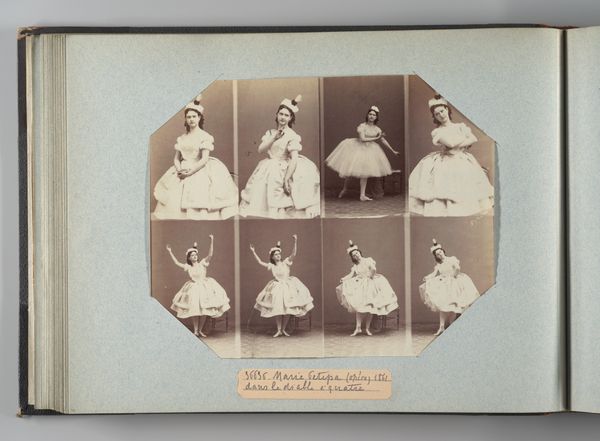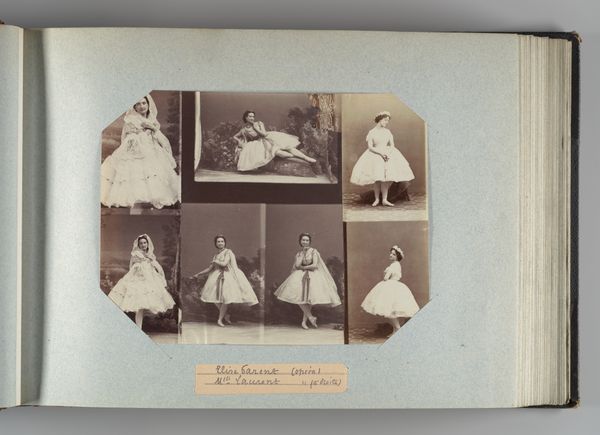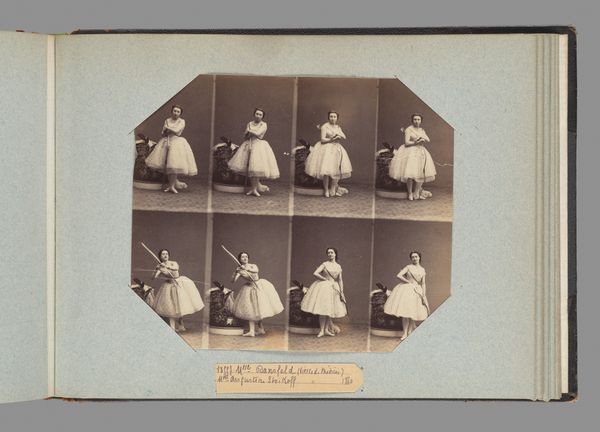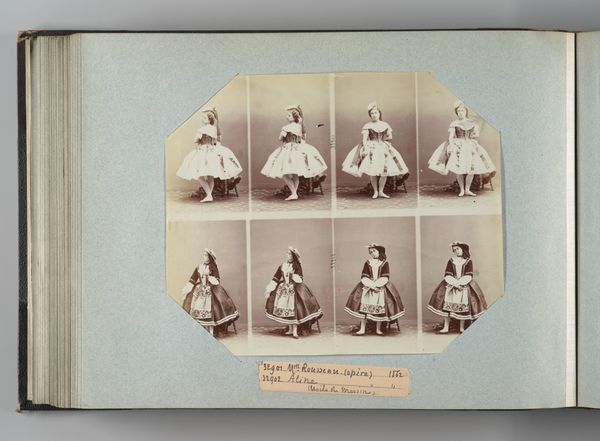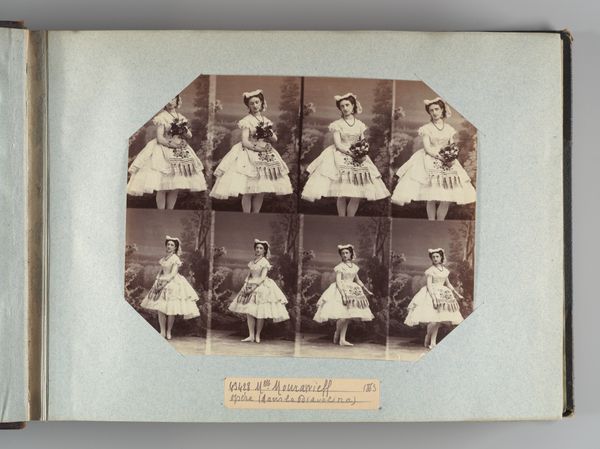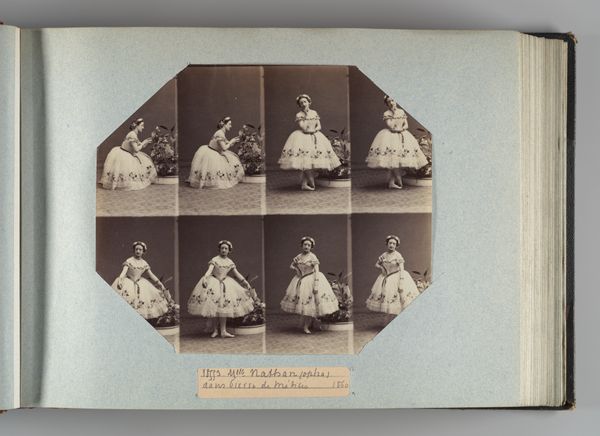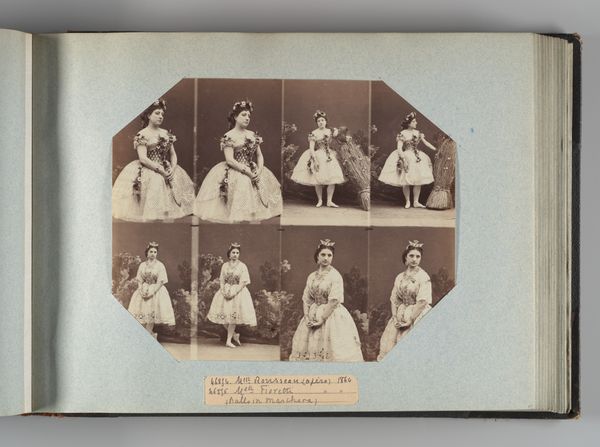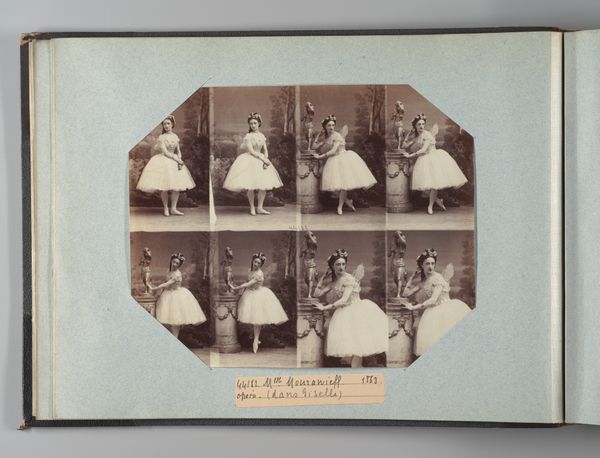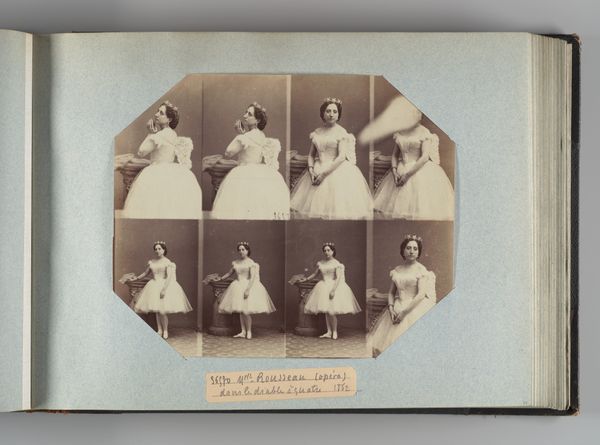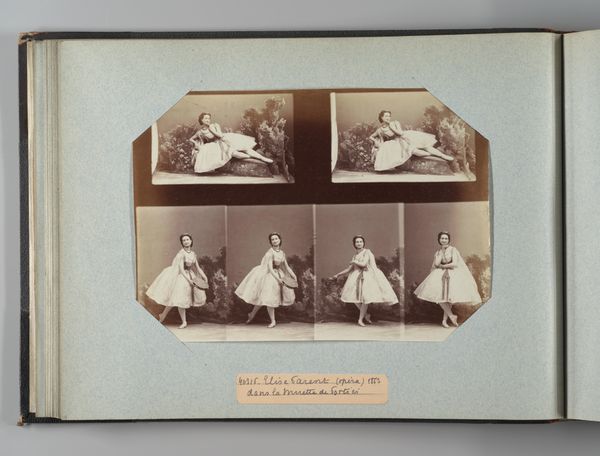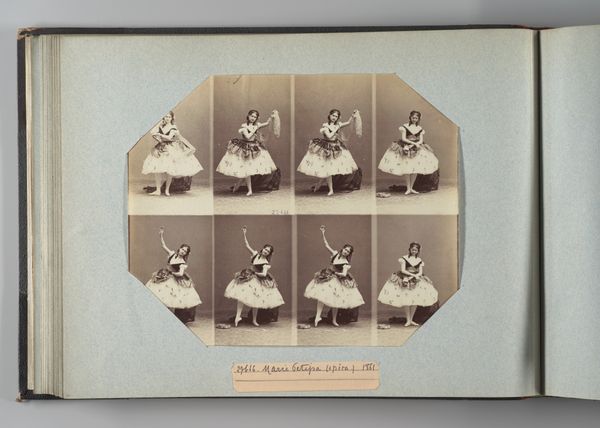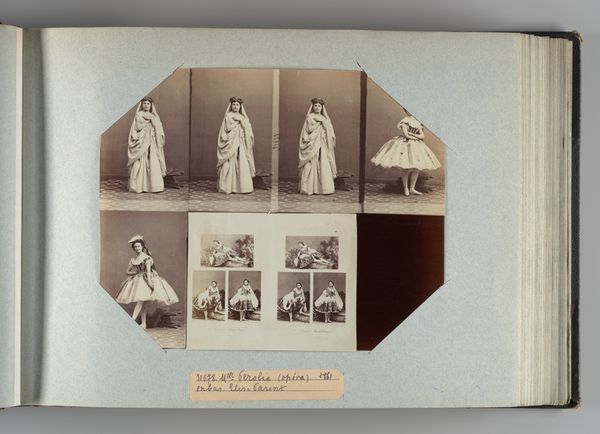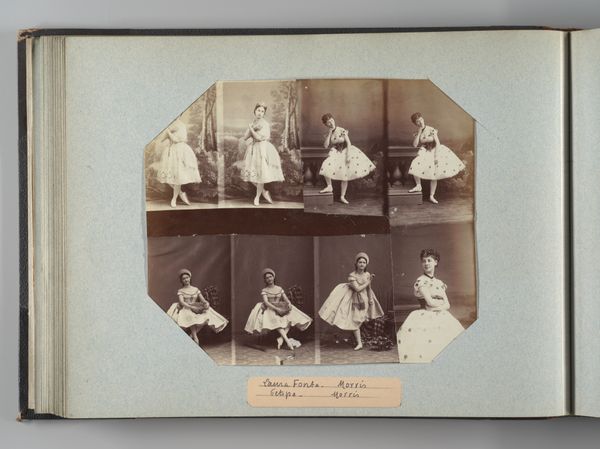
photography, gelatin-silver-print
#
portrait
#
photography
#
gelatin-silver-print
#
academic-art
Dimensions: Image: 7 3/8 × 9 1/4 in. (18.8 × 23.5 cm) Album page: 10 3/8 × 13 3/4 in. (26.3 × 35 cm)
Copyright: Public Domain
Editor: Here we have André-Adolphe-Eugène Disdéri’s "Mlle Simon" from 1861, a gelatin silver print photograph. It has a rather repetitive quality; it's like an early attempt at capturing motion. What is your take on this work? Curator: This carte-de-visite presents an intriguing case study. Disdéri's method involves a multiplication of views achieved through a complex production involving multi-lens cameras and laborious darkroom manipulation. Editor: So, it's not just a simple snapshot, then? Curator: Not at all. Consider the commodification of celebrity evident here. Mlle Simon, an opera performer, becomes an object of mass consumption. Disdéri democratizes portraiture, yes, but it is inherently linked to a booming industry around the spectacle. What do we lose when art is made into something consumable like this? Editor: I guess the artistry can be lost if the process becomes too industrialized. Seeing these images mass-produced makes me consider all the work, both visible and hidden, involved in their creation. It sheds new light on the traditional role of artists in society! Curator: Precisely. The photograph’s value isn’t just in its surface appearance or likeness, but also as an index of the broader economic and social forces at play in 19th century France. It certainly makes one reflect on how we value art objects today and what sort of labor has gone into them. Editor: Indeed. Thank you, I find it insightful to view photography not just as a moment captured, but as the fruit of complex technical and social conditions.
Comments
No comments
Be the first to comment and join the conversation on the ultimate creative platform.
